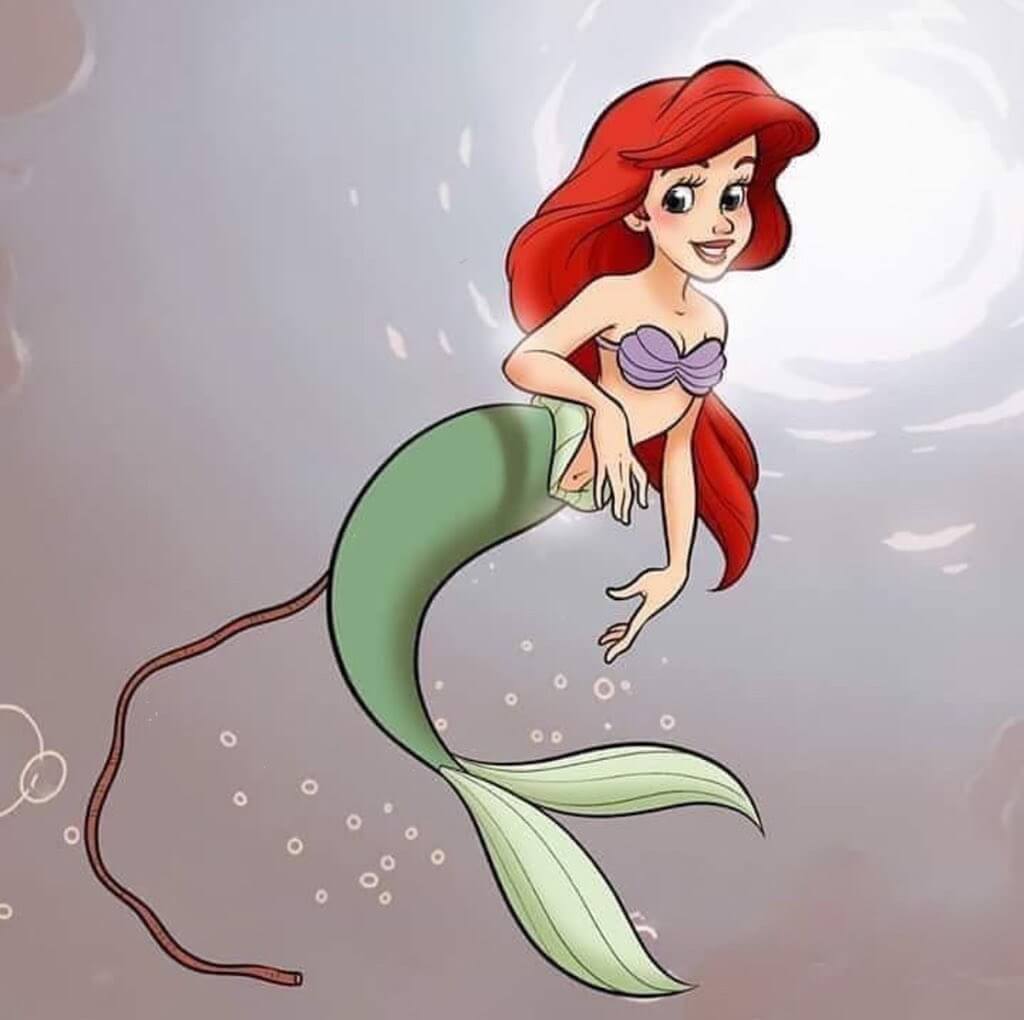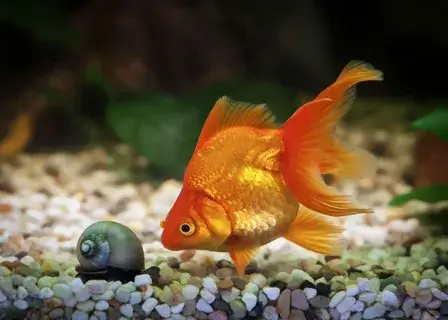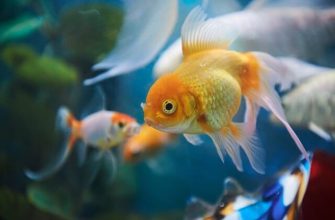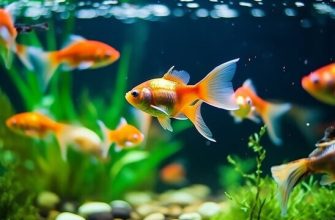To understand the characteristics of goldfish poop, delve into the color and shape/consistency. Discover the diverse colors goldfish poop can have and learn about the different shapes and consistencies it may take on.
Color of goldfish poop
Goldfish poop can vary in color, which can indicate health problems or a normal digestive system. Let’s explore this fascinating world!
Brown poop is a sign of a healthy diet, while green might mean excess plant-based food. White/clear could be due to overfeeding or bad food quality. Red waste hints at internal bleeding or hemorrhaging.
It’s important to pay attention to goldfish poop for accurate insights into their health. Greenish droppings may be an indication of too many plant-based foods. White/clear can be a warning of overfeeding or low-quality food. And red excrement might suggest internal bleeding or hemorrhaging.

For responsible goldfish owners, analyzing poop is key to understanding their needs. Observing it carefully can help create a healthier and happier underwater environment. Plus, goldfish waste can be a form of modern art – from perfectly round pellets to abstract sculptures!
Shape and consistency of goldfish poop
Be prepared! We’re about to take a deep dive into the world of goldfish poop. Usually, it’s cylindrical or tube-like. Yet, the consistency can vary. It’s normally firm, but not too hard. Fiber-rich foods lead to more solid waste. Thin or stringy poop may mean digestion issues. Color changes can be from diet or internal imbalances.
Still, individual fish have unique details. Size, species, age and other variations can cause subtle differences in waste. Monitor your goldfish’s poop regularly to identify potential health issues. If you notice sudden changes, consult an aquatic animal vet for advice.
Factors influencing the appearance of goldfish poop
To understand the factors influencing the appearance of goldfish poop, delve into how diet and feeding habits of goldfish, along with water conditions and quality, play a crucial role. Uncover how these two elements directly impact the visual characteristics of your goldfish’s waste.
Diet and feeding habits of goldfish
Do goldfish poop serve as secret ratings for water conditions? Wonder no more! Let’s take a look at the various factors that shape the appearance of goldfish poop.
- Type of Food: Goldfish eat a variety of food like flakes, pellets, veggies, and live/frozen treats like bloodworms and brine shrimp.
- Feeding Frequency: Too much food leads to excessive waste production. So, feed them regularly.
- Digestibility: Pellets and flakes are highly digestible, resulting in smaller, firmer droppings, compared to live/frozen food.
- Nutritional Value: Nutritious food = better digestion = well-formed excrement.
Goldfish should be fed a mix of pellets/flakes plus live/frozen foods to get all the necessary vitamins and minerals. This will help in maintaining optimal digestive function and thus, improved fecal consistency.

Also, monitor their feeding frequency and avoid overfeeding as it can lead to indigestion and bloating. Feed them several times a day to prevent excessive waste build-up and to give them enough time to digest their food properly.
In conclusion, understanding the link between diet and poop is crucial for goldfish health. By providing them with appropriate nutrition and regulating their feeding schedule, you can guarantee healthy and regular bowel movements.
Water conditions and quality
Brown or green goldfish poop signals an abnormal pH level, high nitrate and ammonia levels, and a low temperature. Whereas, white or clear waste is seen with normal pH levels, low nitrate and ammonia levels, and a normal temperature.
But wait, there’s more! Poor water quality can lead to constipation in goldfish, causing them to produce irregularly shaped feces. It is vital to maintain optimal water parameters for healthy digestion and proper waste elimination from our aquatic chums. Studies have revealed that changes in water conditions directly affect the color and texture of goldfish poop. So get ready to explore the mystery of goldfish poop and uncover the health implications that may change your life!
Health implications of goldfish poop
To understand the health implications of goldfish poop, dive into the normal variations in goldfish poop and learn to identify signs of potential health issues. Normal variations in goldfish poop offer insights into their well-being, while signs of potential health issues provide crucial cues for early detection and intervention.
Normal variations in goldfish poop
Goldfish poop can vary greatly! Color, size, consistency, and frequency of pooping all offer insight into their health. It can range from yellow to brown, small and firm to larger and softer. Plus, frequency can differ between goldfish. Pay attention and observe any unusual changes. Such as excessive softness or discoloration.
Mucus or an strange smell in the waste could mean digestive issues or infections. Shape of the poop could indicate a gastrointestinal problem. Don’t miss any abnormalities, as they could be indicators of underlying health conditions that require attention from a vet.
Monitoring your goldfish’s pooping habits is important. Regularly observe color, size, consistency, odor, and shape. If you notice anything unusual—consult a qualified veterinarian. Early detection and timely intervention could save your goldfish’s health and happiness. So stay informed and keep your goldfish thriving!
Signs of potential health issues in goldfish poop
Goldfish poop can be telling. Check out the clues:
- Color: Bright red or white could mean internal bleeding or parasites.
- Texture: Soft or stringy poops might mean digestive trouble. Hard and dry could signal constipation.
- Size: Too small or too large may point to health issues.
Plus, other details such as frequency can vary.
Here’s an example: a concerned owner noticed their goldfish was inactive and had tiny poops. A vet revealed the fish had a gastrointestinal infection that needed treating fast.
Monitoring goldfish poop is vital for their wellbeing. Cleaning up may not be fun, but it’s worth it to prevent a ‘coronary catastrophe’.
Regular monitoring and maintenance of goldfish poop
To ensure the health and well-being of your goldfish, regular monitoring and maintenance of their poop is crucial. By observing and documenting their waste, you can detect any potential issues. Taking appropriate actions when necessary is the key to maintaining a clean and healthy tank environment for your goldfish.
Observation and documentation
To monitor goldfish poop, it’s essential to consider key aspects. These include color, consistency, frequency, and size. Color can indicate health issues, consistency can reveal digestive problems, frequency can reflect feeding habits, and size may suggest blockages.
By noting these characteristics, any changes from the norm can be identified. Also, tracking frequency and size helps detect patterns, which can guide adjustments to feeding habits or possible blockages.
Other unique details like its density and buoyancy due to diet and temperature should be noted too.
Sarah’s experience with her goldfish, Bubbles, is a good example. When she noticed greenish poop and loss of appetite, she referred to her records and consulted a vet. This timely treatment resolved Bubbles’ dietary issues before they escalated.
Observing and documenting goldfish poop is vital for any responsible fish owner. With careful examination and proper records, owners can keep track of their pets’ health and address any concerns quickly. It’s a small price to pay for a clean tank and a happy fish.
Taking appropriate actions when necessary
Inspect the goldfish tank for any abnormal feces. Check for discoloration or unusual consistency. Adjust feeding habits if needed. Overfeeding leads to poor quality poop. Monitor behavioral changes in the goldfish. This could indicate digestive issues or health problems.
Maintain the water quality. Test and adjust pH, ammonia levels, and temperature. Poor water conditions can impact fish digestion and waste elimination. Consult a vet experienced in aquatic animal care if you have persistent issues or concerns about your goldfish’s poop.
Neglecting monitoring and appropriate actions can lead to serious consequences for your goldfish. Promptly addressing issues related to their poop ensures their health and well-being.
A dedicated goldfish owner noticed drastic changes in her fish’s poop color. She consulted a vet and made dietary adjustments. The fish’s poop returned to its normal healthy color within a few weeks.
This serves as a reminder that vigilant monitoring and timely actions are essential for maintaining optimal health of our aquatic pets. Goldfish poop may not be glamorous, but at least it’s something less crappy to discuss at awkward family dinners!

FAQs about goldfish poop
To understand FAQs about goldfish poop, discover solutions through the section “FAQs about goldfish poop.” Gain insights into common concerns such as the normality of color-changing goldfish poop, frequency of goldfish pooping, and the significance of abnormal goldfish poop.
Is it normal for goldfish poop to change in color?
Goldfish poop comes in a variety of colors. It depends on what they eat. For instance, if you feed them food with artificial coloring, it could cause colorful poop. However, if the color changes drastically or stays the same, it could be a sign of health issues. Thus, it’s important to keep an eye out for any changes.
Regular monitoring of your goldfish’s waste is essential for their well-being. Goldfish usually produce more waste than other types of fish. This makes them interesting to observe. Knowing their waste can help you detect potential health issues quickly.
Normally, goldfish poop should be brownish and well-formed. Any deviation from this should be investigated. If your goldfish start wearing diapers, it means you’re overfeeding them.
How often should goldfish poop?
Goldfish excrete waste frequently due to their high metabolism. On average, they poop multiple times a day. This depends on their size and age. Moreover, diet is a major factor in determining how often goldfish poop. A proper diet with balanced nutrients can lead to regular bowel movements. It’s best to provide them with quality fish feed and avoid overfeeding.
Goldfish have been around for centuries, with records dating back to ancient China and Egypt. People first bred them for aesthetic purposes. Through selective breeding, various fancy goldfish breeds have been developed, each with unique features.
Goldfish poop is essential to their digestion. It should be regular to keep a good balance in their system. Abnormal goldfish poop is like a secret code. Only fish detectives can interpret it and reveal info about diet, health, and a possible fish revolution!
What does abnormal goldfish poop indicate?
Goldfish poop can be a sign of potential issues. Spotting them can help you take action for your pet’s wellbeing.
- Pale or white? This could show lack of nutrition or a bacterial infection.
- Stringy or long? Could be constipation or an intestinal blockage – act quickly!
- Bloody or red? It may indicate internal bleeding, parasite infection, or a tumor.
- Greenish? Too much algae-based food or too much chlorophyll.
- Foul-smelling? It might point to a bacterial or parasitic infection.
Be sure to keep an eye on any abnormalities in the poop. You can learn a lot about your goldfish’s health from it. In the past, people have examined animal droppings to predict or diagnose illnesses. Examining goldfish poop is still an important part of caring for them! Amp up any conversation by talking about goldfish poop and its importance to their health – sure to leave your friends stunned!
Tips for promoting healthy goldfish poop
To promote healthy goldfish poop, provide a balanced diet, maintain clean and well-filtered water, and regularly clean the tank or pond. These practices contribute to the overall well-being of your goldfish and ensure that their waste is a reliable indicator of good health.
Provide a balanced diet
The key to healthy goldfish poop is to provide them a balanced diet. Include proteins, carbs, fiber, vitamins, and minerals for optimal digestion. High-quality fish pellets, fresh veggies like peas and lettuce, spirulina, and daphnia are great sources. Also, avoid overfeeding.
Besides, clean water free from toxins and pollutants is also crucial for proper digestion. Monitor your goldfish’s behavior, physical appearance, and poop consistency regularly. If you notice any changes, consult with a vet.
Remember: the key to healthy goldfish poop is to create an environment that fosters wellness. So, give them super pure water – Beyoncé would be jealous!
Maintain clean and well-filtered water
For clean and well-filtered water, essential for healthy goldfish poop, here are a few tips:
- Regularly clean the tank or aquarium to remove waste and debris that can contaminate the water. This way, bacteria won’t build up and your goldfish will have a healthy home.
- Invest in a top-notch filter to get rid of impurities. This helps keep the water clear so your goldfish can thrive and have healthy poop.
- Test parameters such as pH levels, ammonia, nitrite, and nitrate levels regularly. Make any needed changes so your goldfish live optimally.
Plus, give them a stimulating environment with hiding spots, plants, and other enrichment. Following these steps will not only help them poop better, but also make sure they are fit and content. Give your goldfish the best care they deserve! Also, if you want their water to stay clean, make sure the tank or pond is immaculate. That way, your goldfish will be able to “go” in style!
Regularly clean the tank or pond
- Goldfish poop is essential for a healthy tank/pond. To maintain a clean environment, regularly remove waste and excess food.
- Gather a fishnet, siphon hose, and bucket.
- Scoop out any debris or uneaten food with the fishnet.
- Attach the siphon hose to the tank/pond.
- Start draining the water.
- Vacuum the gravel or substrate while draining.
- Fill the bucket with fresh dechlorinated water.
- Add the fresh water back into the tank/pond slowly.
- Avoid a complete water change every time you clean.
- Monitor filtration systems regularly.
Goldfish have been kept as pets for over 1,000 years! They originated in China during the Tang Dynasty. Wealthy people in the Song Dynasty (10th century) first introduced them to indoor aquariums. Today, they are popular pet fish due to their vibrant colors and easy care. To be an expert at poop-promoting, follow the steps above!
Frequently Asked Questions
1. What does goldfish poop look like?
Goldfish poop is usually small, round, and brown or black in color. It may also have a slightly gritty texture.
2. How often do goldfish poop?
Goldfish typically poop several times a day, with the frequency depending on the size and diet of the fish.
3. Is goldfish poop harmful to humans?
No, goldfish poop is not harmful to humans. However, it is important to maintain good hygiene when handling aquariums to prevent the spread of bacteria.
4. How can the appearance of goldfish poop indicate their health?
Abnormal changes in the appearance of goldfish poop can be a sign of health problems. For example, stringy or white poop may indicate parasites or constipation, while green poop may indicate a diet that is too high in protein.
5. Can goldfish poop be used as fertilizer?
Yes, goldfish poop is high in nutrients and can be used as fertilizer for plants. However, it should be aged for several months or mixed with other compost before use.
6. How can I make sure my goldfish are producing healthy poop?
To ensure your goldfish are producing healthy poop, make sure they have a balanced diet, a clean and properly sized aquarium, and are not showing any signs of illness or stress.

Conclusion
Goldfish poop may not be a popular topic, but it has its own unique characteristics. It’s usually small, dark cylindrical pellets. They can float or sink to the bottom of the tank. It’s soft and malleable, so it’s easy to clean up.
Different foods can change the color of the poop. For example, green food or algae-based pellets mean a slightly green hue. Protein-rich food can make it darker brown or black.
Watch for any sudden changes in consistency, color, or frequency. If you do, contact a vet who specializes in aquatic animals.










